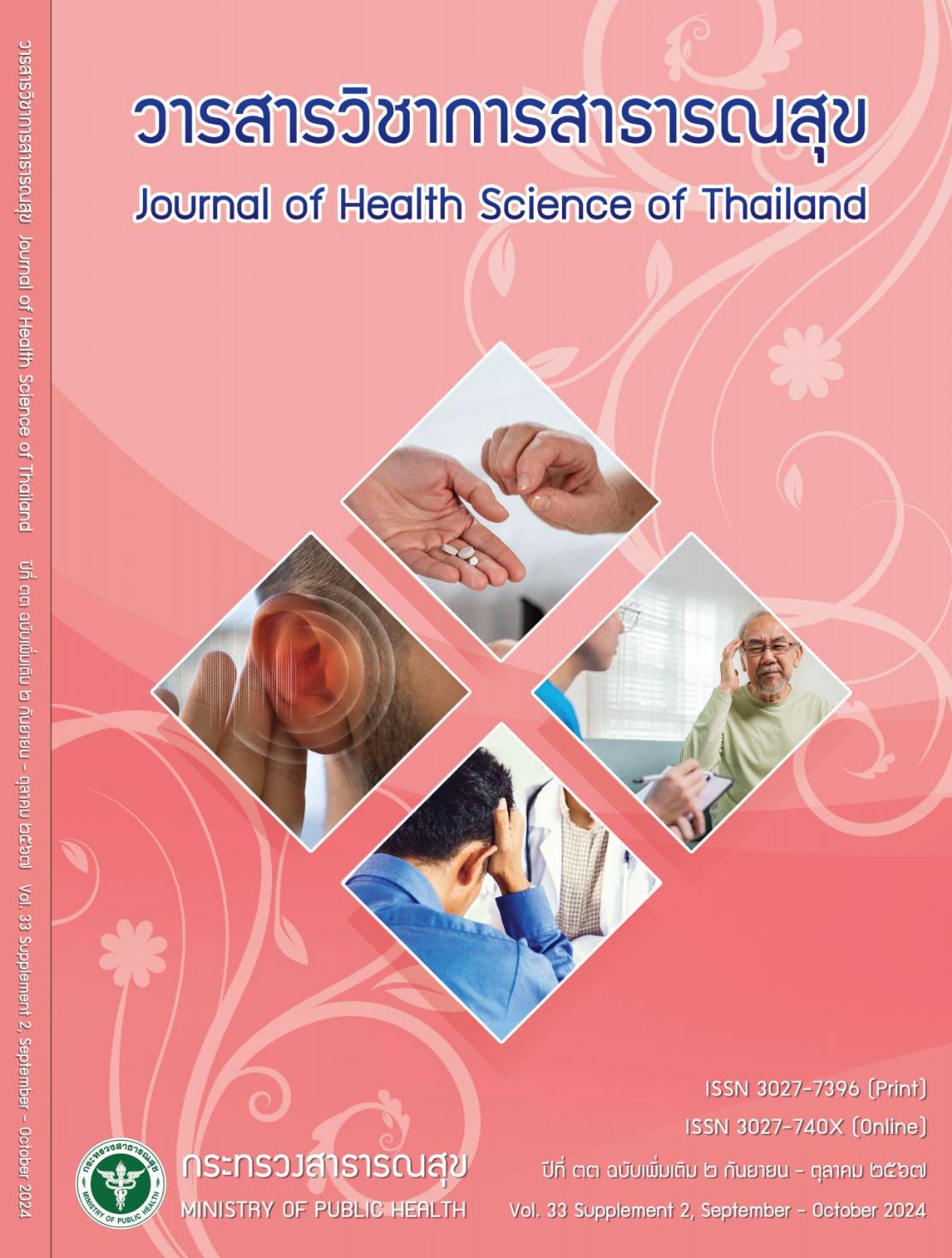A Causal Relationship Model for Anxiety and Health Literacy by Moderating Demographic Factors of Adult Population during Public Health Emergencies in Thailand
Keywords:
anxiety, health literacy, COVID-19, demographicAbstract
Understanding the factors that determine anxiety during the COVID-19 pandemic is an important
issue, as anxiety has resulted in populations expressing themselves in various measures related to the
prevention and control of COVID-19. This cross-sectional analytical study aimed to study the level of
anxiety and health literacy in the COVID-19 pandemic situation of the adult population in Thailand;
assess the relationship of health literacy and demographic factors to anxiety; and study the causal
relationship between anxiety and health literacy. The study period was between January and April 2022,
Altogether, 1,100 Thai males and females aged 15 59 years old were recruited through a multi-step
sampling to obtain representatives of 13 Health Regions. Data were collected using the Department of
Mental Health’s Anxiety Assessment and the Department of Health Services’ Health Literacy Assessment
forms. Statistics used to analyze data included descriptive statistics, and inferential statistics (logistic
regression analysis, confirmatory factor analysis, and structural equation modeling analysis). The study
found that overall anxiety COVID-19 was mostly low (53.27%), and overall health literacy was mostly
very good (62.00%). Factors associated with anxiety include health literacy (OR=0.85, 95%CI: 0.84-
0.86), gender (OR=0.34, 95%CI: 0.27-0.48), age (OR=2.61, 95%CI: 1.92-3.57), history of
chronic disease (OR=1.72, 95%CI: 1.26-2.36), and history of infection (OR=0.57, 95%CI: 0.40-
0.79). The association model between anxiety factors and health literacy factors through demographic
factors was consistent with empirical data (p=0.0994, Chi-square = 6.265, TLI = 0.987, CFI = 0.997,
SRMR = 0.015, RMSEA = 0.031). Anxiety variability can be explained by 56.34%, thus a unified
health communication mechanism and health communication channels that cover specific populations
should be developed.
Downloads
Downloads
Published
How to Cite
Issue
Section
License

This work is licensed under a Creative Commons Attribution-NonCommercial-NoDerivatives 4.0 International License.







